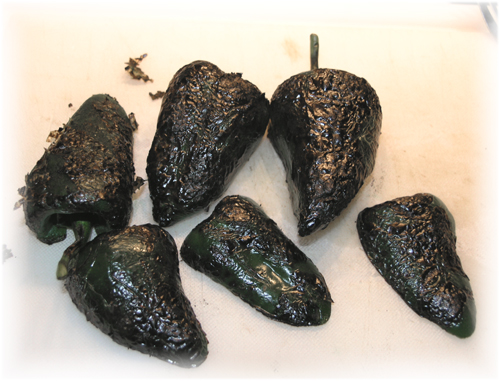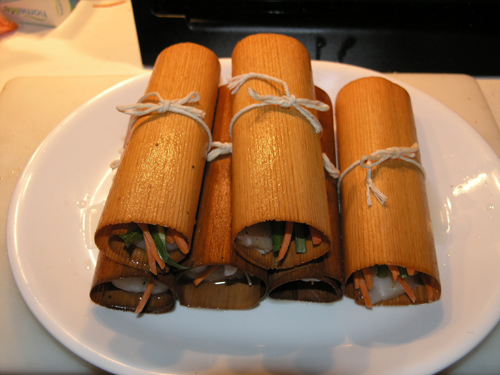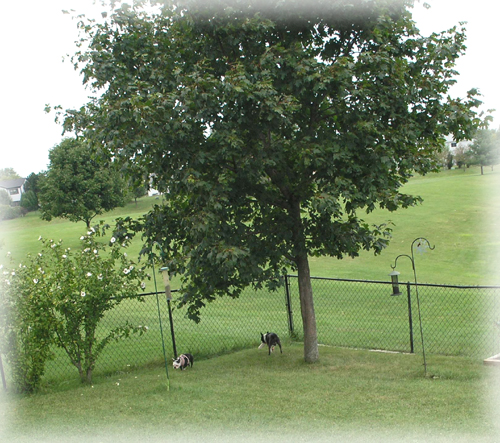We, my husband and I, have grilled on cedar planks before. Using cedar on the grill imparts such a fabulous flavor into food! But when we saw Cedar Papers, we gave into our curiosity and bought a pack. For 8 papers the cost was $5.99. Making the cedar-wrapped bundles was actually a pleasure. We still have two papers left to try with some steak in the future. The cedar papers, I believe, are really just for a nice presentation on a plate. It was a real thrill to see this nicely wrapped package on a plate and I couldn't wait to untie the string!
Grilled Cedar-wrapped Fish
6 fish fillets (I had flounder)
1-3 poblano peppers (I had very small ones) charred and cut into thin strips
2 green onions - sliced length-wise into thin strips
Julienned carrots
salt & pepper to taste
Sesame oil
Cedar Papers (soaked in water for at least 10 minutes- I used chardonnay - also soak the ties that come with the papers)
Char the poblanos and peel off the skin.
Slice charred poblanos into thin strips
Julienne the carrots (I cheated, I bought them this way)
Cut you green onion in half (width-wise, between the bottom and where the top starts to branch off).
Slice the green onions thinly.
Lay out the soaked cedar paper.
Rub sesame oil on the cedar (on the food side - adds flavor & food won't stick).
Place the fish filet on the cedar.
Add salt and pepper to taste.
Add a few slices of poblano, green onion and carrots on top of the fish.
Roll up the cedar carefully as the cedar is very thin.
Tie the little bundle with the tie that came with the papers.
Cook on a grill that's fairly hot, about 400 degrees.
Grill for about 5-6 minutes per side.
Place a finished cedar-wrapped fish bundle on a plate.
I was so excited to try the fish that I opened up the bundle without taking a picture!
We also grilled some garlic toast to accompany the fish, which went together perfectly.
Everything was delicious - Enjoy!










